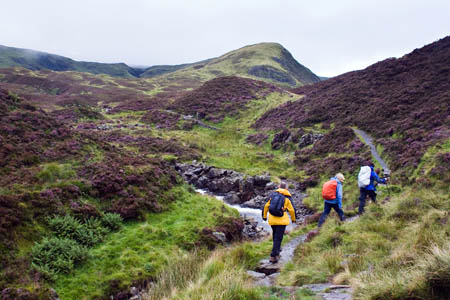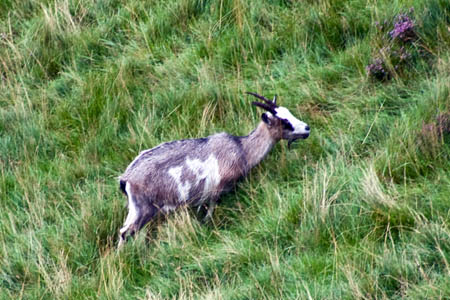A decision to fence off part of an upland beauty spot to allow the growth of rare alpine plants has been a success, according to a conservation charity.
Five years ago, the National Trust for Scotland erected a fence at the Grey Mare’s Tail national nature reserve to protect wildflowers and montane willows from overgrazing.
And for the first year, patches of three rare alpine plants have appeared.
The NTS property in Moffat Dale includes the 821m (2,693 ft) corbett White Coomb, is renowned as southern Scotland’s most important site for rare upland plant species.
Richard Clarkson, property manager for the Dumfries and Galloway estate said annual monitoring of montane willows and wildflowers show encouraging signs that their populations are beginning to recover after years of overgrazing.
He said: “Montane scrub is the rarest and most threatened of our native woodland and is now largely confined to remote and inaccessible cliffs in Scotland. In 2005, after public consultation, we decided to fence off an area to see how the plants would fare when they were protected from sheep and the local goats.
“The results are encouraging with downy willow and dark leaved willow patches and plants increasing in size since 2007, with many new patches, previously unnoticed, cropping up for the first time.”
Other wildflowers in the area are also recovering, with the height and number of other flowering plants having doubled since 2007. Alpine species like roseroot, alpine saw-wort, and hawkweeds are all doing well, while dwarf cornel also seems to be increasing.
In 2010, for the first time there were also good flowering patches of northern bedstraw, common valerian and water aven.
However, the NTS said it is still early days and the charity’s staff are hoping other species like wood crane’s-bill, wild angelica and meadowsweet will increase their flowering over the next few years.
Mr Clarkson added: “Evidence that the montane scrub habitat is recovering at Grey Mare’s Tail is excellent news. However, the fence was never seen as a long-term solution, and the aim is to remove it some years down the line when the grazing is right and willows and other upland plants are in a healthy and self-sustaining state.”
This work has been supported by Scottish Natural Heritage, which funded 50 per cent of the White Coomb fencing costs.

